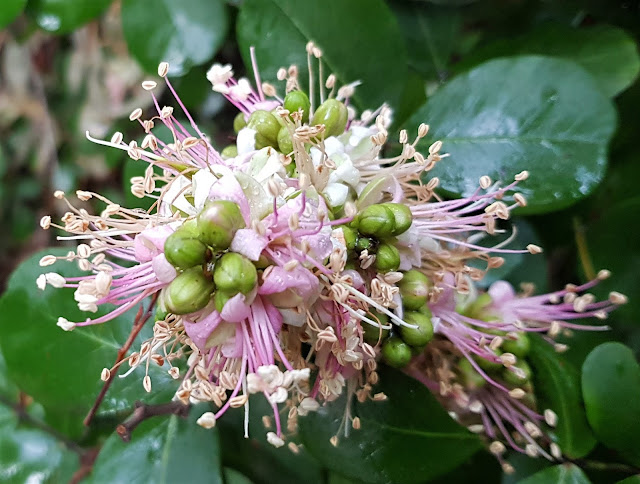This boer-bean's for sober bugs not drunken birds
You've no doubt heard about the African Weeping Schotia, Schotia brachypetala, and the drunken Friar Birds of Queensland. If not, it's time to browse the Talking Plants archive.
This one is different. It's a Schotia, but the flowers are pale in colour and smaller than those of its weeping sister, and (in my limited experience) it's a messy bush rather than a shading tree. If you live in South Africa you might call Schotia brachypetala the Weeping Boer-bean and this one, Schotia latifolia, the Bush Boer-bean.
Apparently it can actually be 'tall and graceful', you just to need to give it a bit of extra water. Or so they say.
Dutch settlers in southern Africa used the seed from various species of Boer-bean for food, hence the 'Boer' in its common name. The seed was also eaten by the indigenous African people, who similarly picked the pods green, roasted them then ate the steamed seed.
The bark is used locally as a dye (green) and for tanning leather, as well as for treating tick-borne diseases in livestock. Chemicals isolated from the bark show antibacterial properties, which may be responsible for its veterinary success.
I think there are only four species in the genus, all of them with bright scarlet flowers, except this one. Like the others though, the Bush Boer-bean has what we call compound leaves, in this case 3-5 pairs of 'leaflets'.
We have what seems to be a small cluster of plantings of this species beside the Anderson Street fence, on the east side of Melbourne Gardens. In January, it was in late, heavy flower, and sporting a little summer rain in my pictures.
Like the other Schotia species, abundant nectar attracts birds to the flowers of the Bush Boer-bean although not in quite the same quantities that causes the Weeping Boer-bean to weep, and seemingly not enough to cause bird drunkedness when the nectar ferments.
In any case the colour of its flowers would make them more attractive to insects. Birds see and like red, insects generally don't. It seems wasps, ants, beetles and flies do visit the flowers, and then these insects attract birds, and as a bonus, reptiles.
So quite a party, but more sober than that of the Weeping Boer-bean.




Comments
And this Schotia is a nice contrast.
Thank you.